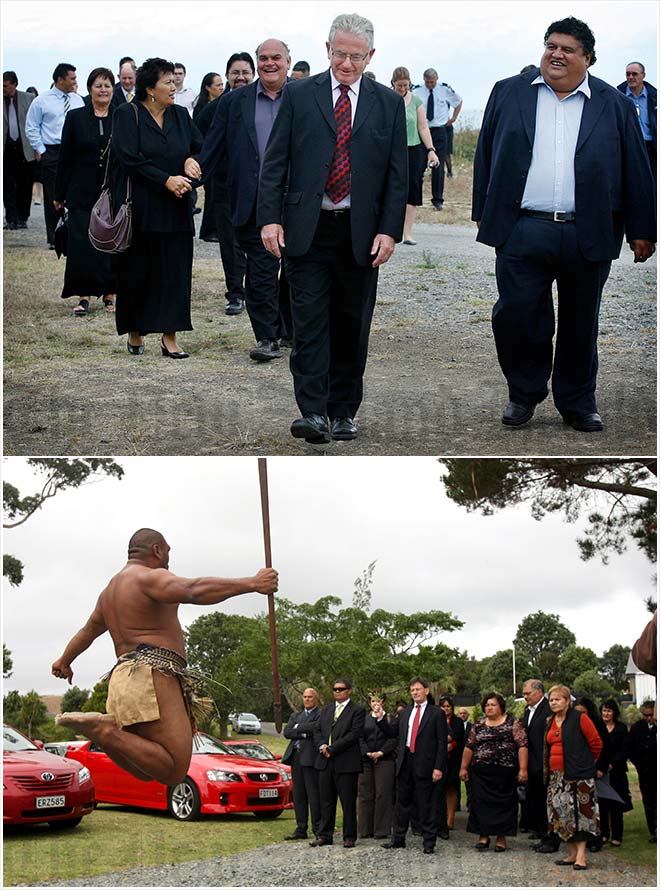
The treaty principle that the Crown has a duty to consult with Māori has been applied in dealing with the ownership of the foreshore and seabed. Above, the minister in charge of treaty negotiations, Michael Cullen, and Māori Affairs Minister Parekura Horomia enter Maraenui Pā, Ōpōtiki, in 2008. They were recording progress on consultations with local Te Whānau-a-Apanui people. Below, Joshua Wikiriwhi-Heta leaps high during his wero to Cullen’s successor, Attorney-General Christopher Finlayson, at Puatahi Marae, Warkworth, in 2010. Finlayson was attending a hui as part of further consultation on the Foreshore and Seabed Act 2004.
Using this item
New Zealand Herald
Reference:
280208NZHGBFORESHORE3.JPG (top); 130410NZHDPFINLAYSON01.JPG (bottom)
Permission of the New Zealand Herald must be obtained before any re-use of this image.






Add new comment